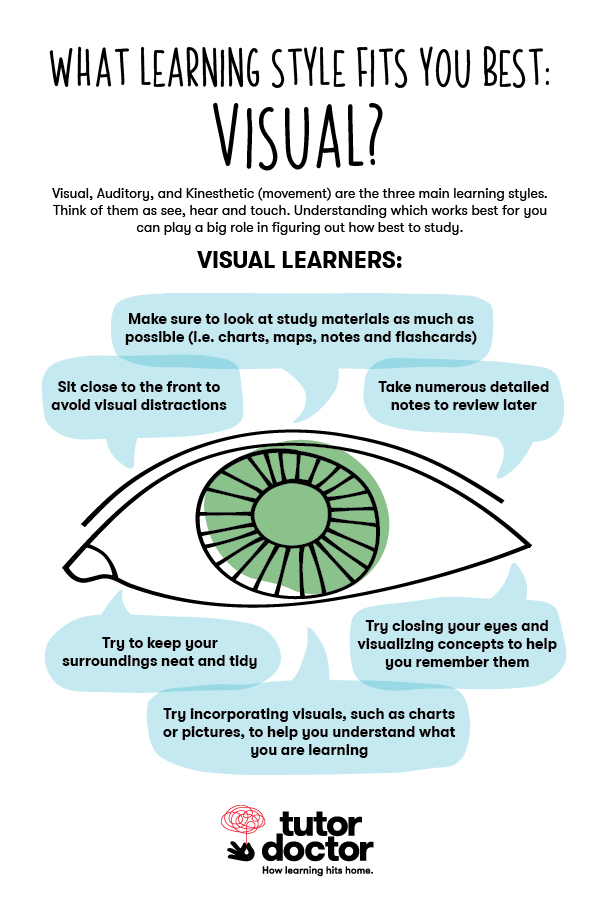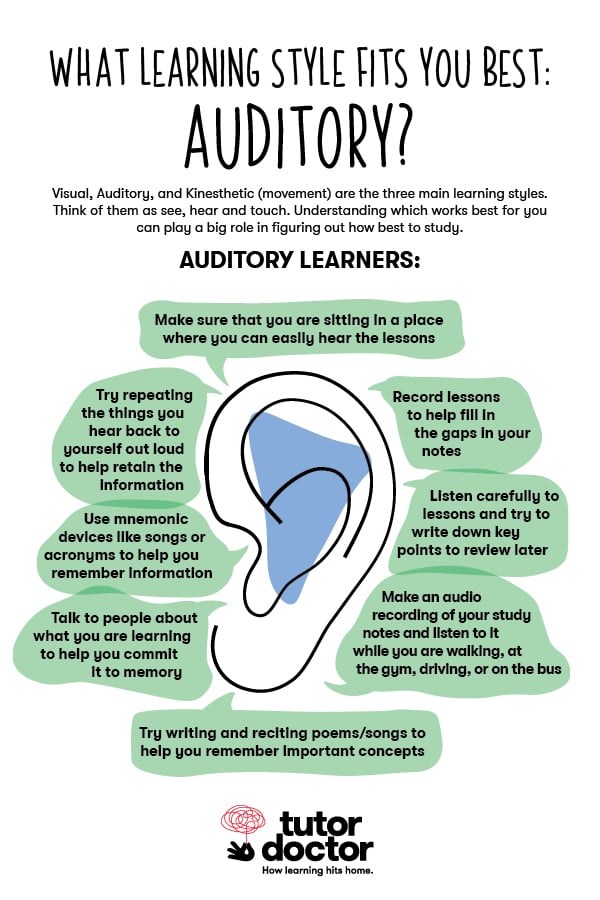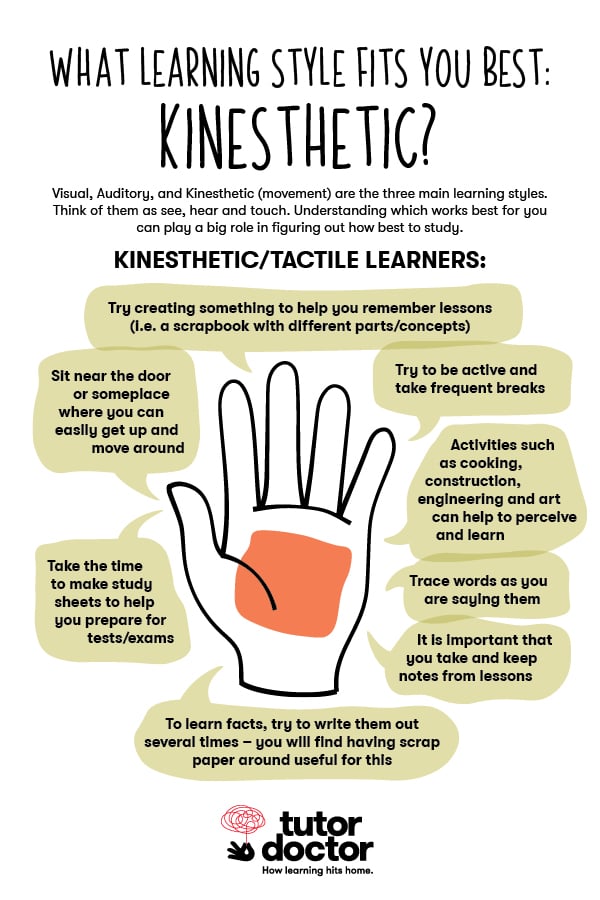Parent’s Guide to Understanding Your Child’s Learning Style
How to identify your child’s learning style and what techniques and resources will help them learn best
By Becky Ward
Oct 04, 2023
Credit: Tutor Doctor
Every child is unique, and that uniqueness extends to their learning style. All kids absorb and recall information differently, and tailoring their education to match their learning style can make a world of difference.
Three types of learning styles
There are three main learning styles that most students fall under: visual, auditory, and kinesthetic learners. Visual learners typically learn best when they can see the information they’re trying to process, like a concept explained with a diagram.
For auditory learners, an idea might be easier to grasp if they hear it and can connect it with other auditory stimuli, like music or rhyme. Lastly, kinesthetic learners learn through physical experiences, so hands-on demonstrations are often very effective learning strategies.
Research shows that students who incorporate their learning style into their study methods do better on tests and overall grades. Knowing how students learn most effectively helps parents and teachers select techniques, strategies, and resources that will impact how well they process and retain information, develop understanding and knowledge, and transform that information, understanding, and knowledge into learning.
It is possible to have more than one learning style and some material may be easier for a student to learn using strategies from a different style. Learning is not “one size fits all,” so it is crucial to incorporate techniques, methods, and resources from each learning style to round out the learning and develop knowledge.
Knowing the student’s learning style will make it easier for parents and teachers to present information in a format they can relate to. Below are details of each learning style and tips to help maximize each technique to support the student’s academic success.
Visual Learners
 Credit: Tutor Doctor
Credit: Tutor DoctorVisual learners can absorb information when presented visually and tend to be energetic, observant, and usually appreciate details. They prefer to learn through visual aids, such as images, diagrams, charts, and videos. They often benefit from color-coded notes, mind maps, and other visually organized study materials.
Use flashcards, symbols, slide shows, arts and crafts, and videos to support the student’s learning. Incorporate learning activities such as board games, Lego, word scrambles, and Scrabble or create acronyms and mnemonics to help them remember facts.
Auditory Learners
 Credit: Tutor Doctor
Credit: Tutor DoctorAuditory learners learn best through sound and spoken information. These individuals often thrive in lectures and group discussions. They might also benefit from reading aloud or recording their notes and listening to them later. Auditory people have very expressive personalities and possess excellent communication skills.
They express themselves very well and often like to listen to others. Auditory learners can follow a conversation while listening to music and prefer studying with music playing softly in the background.
Try using audiobooks, recordings, verbal repetition, reading notes/assignments aloud, and music to support your child’s learning. Incorporate learning activities such as 20 Questions, Mad Libs, I Spy, and Jeopardy.
Kinesthetic Learners
 Credit: Tutor Doctor
Credit: Tutor DoctorKinesthetic learners learn by doing and experiencing. They strongly prefer hands-on activities and learn best through physical engagement. These learners often benefit from interactive experiences, experiments, role-playing, and real-world applications of concepts.
Try using tools such as learning games, drawing, arts and crafts, incorporating movement into study time, and using fidget toys or stress balls during lectures and discussions to support your child’s learning.
Some Kinesthetic learners prefer textual information and learn best by reading and writing down information. They process information best through reading textbooks, taking detailed notes, and writing essays. They may also benefit from summarizing information in their own words. So, you might also try making lists, rewriting notes and rereading texts, converting visual ideas into writing, and reading aloud to support your child’s learning.
How else to support your child once you know their learning style
Most teachers present information in several formats to accommodate all students’ learning styles. If your student needs help with a subject, ask their teacher or tutor to help you ascertain their learning style and present the information in the best way they will absorb.
You can also have your student take a quick online test with sites such as ID Pride or VARK. Tutors and teachers are also great at understanding learning styles, and they can help your student understand their learning styles and convert information into a format they know best.
Author:
Becky Ward, Education Experience Specialist at Tutor Doctor, an internationally renowned tutoring franchise. With years of experience in the education industry, Ward creates resources for tutors, works with the franchisees, has been a tutor herself for decades, and is a certified Junior Kindergarten through grade 12 teacher with special education teaching qualifications.
Weekly Newsletter
Keep up with your baby's development, get the latest parenting content and receive special offers from our partners